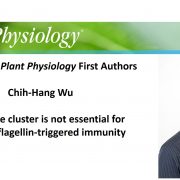
Recognizing Plant Physiology authors: Chih-Hang Wu
Plant Physiology, Plant Physiology: Author ProfilesChih-Hang Wu, co-first author of NRC4 gene cluster is not essential for bacterial flagellin-triggered immunity
Current Position: Postdoctoral Scientist, The Sainsbury Laboratory, University of East Anglia, Norwich Research Park, UK; Assistant Research Fellow, Institute of Plant and Microbial Biology,…
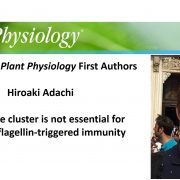
Recognizing Plant Physiology authors: Hiroaki Adachi
Plant Physiology, Plant Physiology: Author ProfilesHiroaki Adachi, co-first author of NRC4 gene cluster is not essential for bacterial flagellin-triggered immunity
Current Position: Postdoctoral Scientist, The Sainsbury Laboratory, University of East Anglia, Norwich Research Park, UK
Education: BSc, MSc and PhD, Graduate School of Agricultural Science,…

Recognizing Plant Physiology authors: Juan Carlos De la Concepcion
Plant Physiology, Plant Physiology: Author ProfilesJuan Carlos De la Concepcion, co-first author of NRC4 gene cluster is not essential for bacterial flagellin-triggered immunity
Current Position: Post-doc, Department of Biological Chemistry, John Innes Centre, Norwich, UK
Education: BSc in Biology, BSc Biochemistry and MSc in Molecular Genetics and…
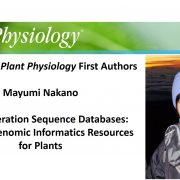
Recognizing Plant Physiology authors: Mayumi Nakano
Plant Physiology, Plant Physiology: Author ProfilesMayumi Nakano, first author of Next-Generation Sequence Databases: RNA and Genomic Informatics Resources for Plants
Current Position: Scientific Manager, Meyers Lab, Donald Danforth Plant Science Center
Education: M.A. in Japanese Literature from University of Wisconsin-Madison, M.A. in Comparative…
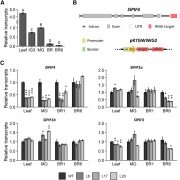
Phytochrome-Interacting Factors and Tomato Qualities
Plant Physiology, Plant Physiology: On The InsidePhytochromes (PHYs) are red/far-red light photoreceptors that are activated by light and deactivated by dark and high temperature. Upon light exposure, PHYs are translocated into the nucleus, where they interact with PHY-INTERACTING FACTORS (PIFs) and induce the degradation of these transcription factors.…

Insights into Esca Grape Vine Disease
Plant Physiology, Plant Physiology: On The InsideEsca is a fungal vascular disease of grapevine (Vitis vinifera) that negatively impacts grape yield and the wine industry. Esca is characterized by three main symptoms: leaf scorch, trunk necrosis, and a colored stripe along the vasculature. The fungi most strongly associated with esca wood necrosis…
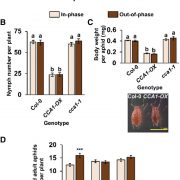
Circadian Clock Gene Affects Aphid Feeding
Plant Physiology, Plant Physiology: On The InsidePhloem sap-feeding aphids inflict plant damage by direct feeding and by acting as a vector for plant disease transmission. Their highly specialized stylets reach the phloem sieve elements, allowing aphids to extract plant photoassimilates without consuming structural tissues. Probing and feeding by aphids…

Improving Grain Filling Rate in Rice
Plant Physiology, Plant Physiology: On The InsidePoor grain filling by hybrid japonica rice (Oryza sativa) is a major agricultural problem. It has previously been reported that the rice accession Ludao, a wild-type japonica rice grown naturally in the Liangyungang region of China, exhibited a high grain-filling rate and could be selected as a parent…
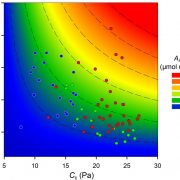
CO2 and O2 as Drivers of Plant Macroevolution
Plant Physiology, Plant Physiology: On The InsideThe evolution of photosynthesis and, at a later point, the emergence of land plants resulted in substantial changes in the composition of Earth’s atmosphere. Plant colonization of the land in the early Paleozoic (more than 450 million years ago [mya]) was followed by a rapid drop in atmospheric [CO2],…

